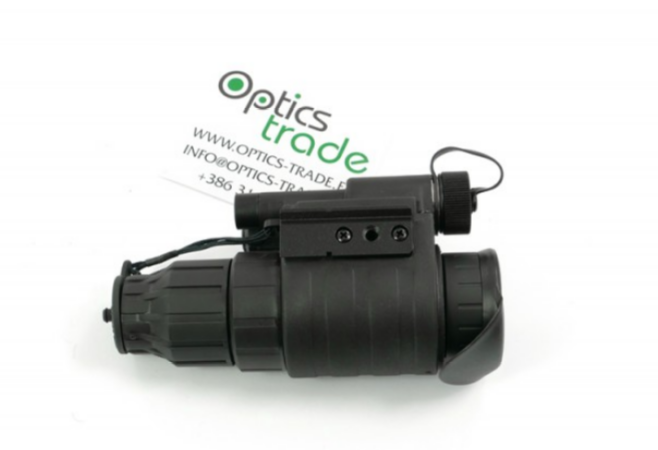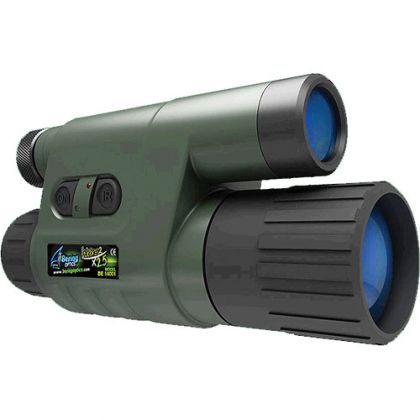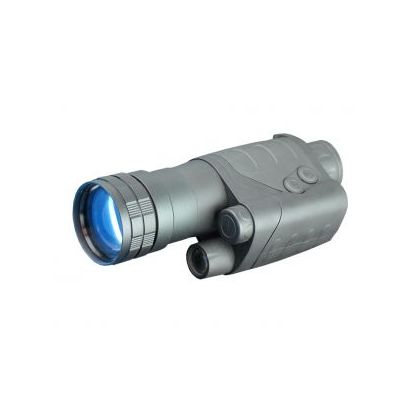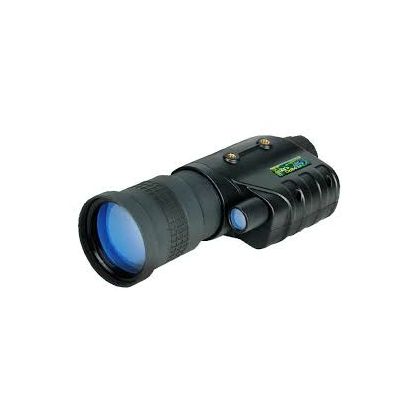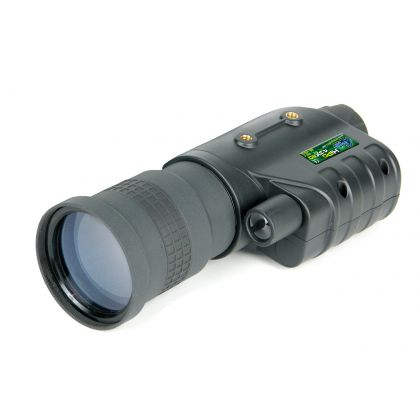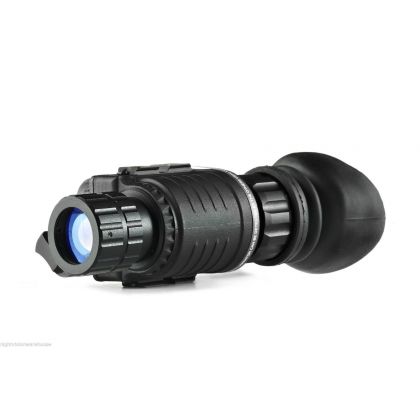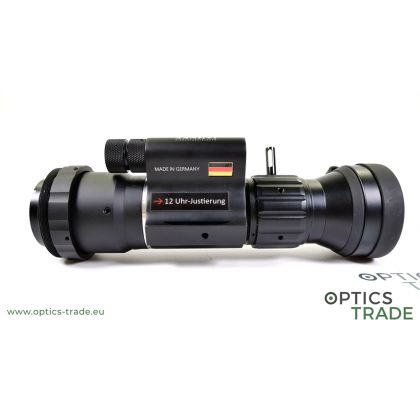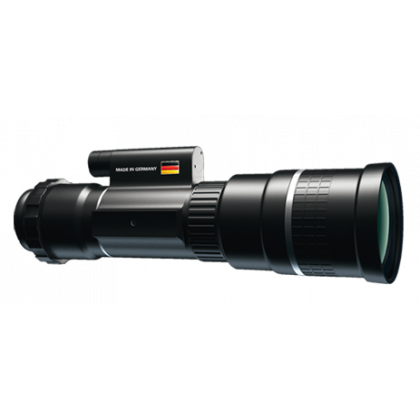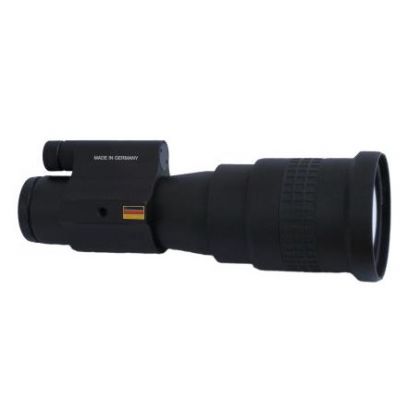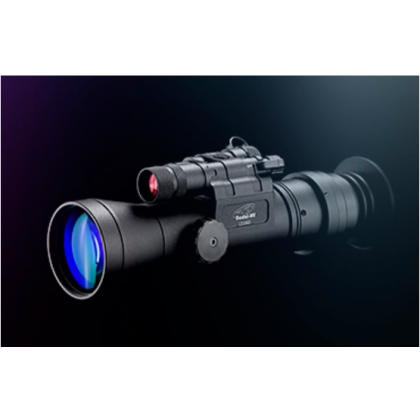Mounts
NV Scopes
Night vision monoculars, or scopes, like many users prefer, are available as analog or digital devices. They are also available with fixed 1x magnification, or with a magnified picture with various magnifications like 2x, 3x, 4x, and so on.
-
The ones with a fixed 1x magnification are mainly designed for the military and other special forces, to be used as helmet-mounted devices.
-
Devices with a magnification, on the other hand, are mainly used by hunters for observing animal life during the night. Because of the bigger magnification, it is possible to spot and identify animals even at bigger distances. The field of view is smaller with bigger magnifications, but the detail recognition increases.
Pulsar Challenger GS
Most common use examples
Monoculars with a fixed 1x magnification offer a wide field of view, which is especially important for small distance observing like streets, forests, or even rooms. With 1x magnification, the user can also aim through a rifle mounted optic, and because of that, many red dot manufacturers offer their optics also with a night vision illumination. Since the optic does not feature any magnification, the user can also walk during the night or even drive a car, etc.
Analog night vision scopes are available with image intensifier tubes of all 3 common generations, and the newer the generation, the more expensive they get.
- Gen. 1 and Gen. 1+ night vision scopes mostly have to be used together with an infrared illuminator since they do not intensify the rest-light enough to give the user a bright picture.
- In very dark areas also Gen. 2 and Gen. 2+ NV devices need an IR illuminator, especially for bigger distances.
- Gen. 3 NV devices are normally not equipped with an IR illuminator since in most cases it is not needed.
Also digital night vision monoculars are getting very popular, especially because of the price/quality ratio. They also have some advantages, but also disadvantages against analog NV monoculars.
Analog vs digital night vision monoculars (scopes)
Night vision devices are available in many different shapes and sizes. Years ago, only analog scopes were available on the market. These were, and still are, available with different image intensifier tubes, which, in the end, tell us the price.
The cheaper devices feature a Gen. 1 image intensifier tube, but these are very limited in the distance of observing and also the performance in darker areas. The use of an additional IR light is in most cases needed. The better night vision monoculars feature a Gen. 2 or even a Gen. 3 image intensifier tube. With these, the detection range extends, but also the price is a lot higher.
With an analog night vision device, you see the image directly through the device without a screen. This means the device has no refresh rate, so the image is displayed in normal time without any delay.
With a digital night vision device, the image gets into the device with a sensor that is right behind the objective lens. This sensor processes and converts the image you are looking at to an electric signal, which, in the end, is showed on the screen in the ocular. Because the image gets converted, all digital night vision devices have a refresh rate.
The refresh rate tells us how many pictures we see in one second. Good digital night vision devices have a refresh rate of 50 or even 60 frames per second, so the user sees a nice and smooth picture. When the refresh rate is too low, then fast-changing frames can be seen, which affect the viewing experience. Also the display the user is looking at has an important role. If the resolution of the display is good, also the displayed image is better, and you cannot see every single pixel.
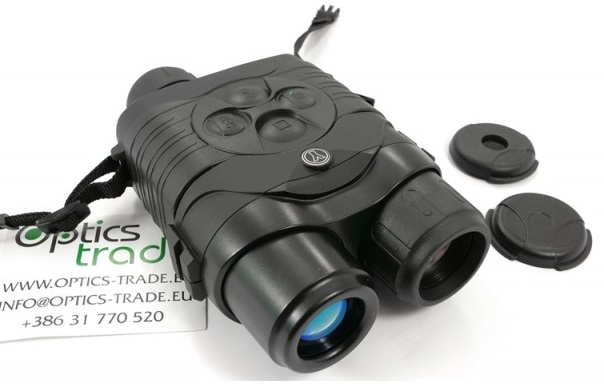
Yukon Digital NV Monocular
-
Digital night vision devices have one big advantage against analog devices – you can take photos and even videos. With an analog night vision device, this is not possible.
-
With a digital night vision, it is also possible to use the digital magnification, so you are not forced to use only one magnification.
-
Digital night vision devices can also be used during the day since the bright light cannot damage the sensor. This is not the case with an analog night vision device, because exposing the device on a sunny day can damage the image intensifier tube.
-
Whatsoever, digital night vision devices consume a lot more electricity. With an analog night vision device, the batteries last 5-10x longer with less battery capacity.
Night vision Binoculars vs night vision scopes (Monoculars)
Both devices have some pros and cons. Night vision scopes (monoculars) that feature more than 1x magnification are mostly used by hunters. They offer a magnified and intensified picture, which helps the user observe animals, nature, etc. during the night.
Compared to NV binoculars, they are a lot smaller in size, and also lighter in weight. Because of that, it is a lot more comfortable to transport since it takes less space. They are also cheaper.
Night vision binoculars offer the user a great viewing experience because when looking with both eyes, it is a lot more comfortable. This is especially noticeable at longer time observations. The depth perception is also better, but they are more difficult to adjust to the user’s eyes. They are mostly pretty big and bulky, and in most cases more expensive than scopes.
Green vs. Black & White IIT
An Image Intensifier Tube (IIT) is the main component of an analog night vision device. It tells us how good we will see in dark areas, and how many times the light gets amplified through the device. The main difference makes the generation of an IIT, but Generations 2 and 3 IIT´s can be ordered also in green or black & white.
The differences are not big, but both have some advantages.
-
For many people, observing for a long period of time is much more comfortable with a night vision device that features a green IIT since the green color is more soothing for the eyes.
-
The green IIT´s have often a brighter appearance, but the detail recognition is mostly better with a black & white IIT.
- It is also worth mentioning that Night vision devices which feature a black & white image intensifier tube, are in most cases more expensive than the green ones.
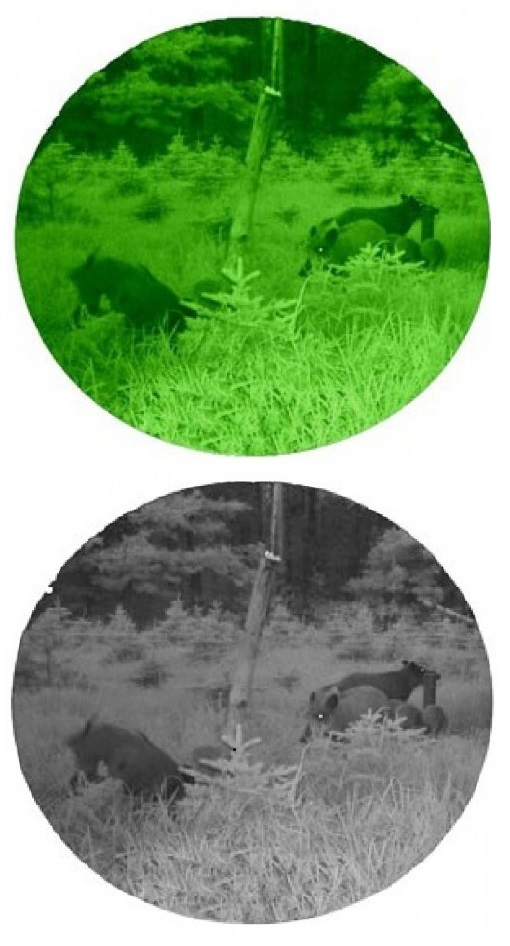
Green vs. Black&White IIT
Digital night vision devices, on the other hand, do not feature an image intensifier tube but a sensor, and the image is displayed on the screen in the ocular. Because of that, some digital night vision devices have an advantage that the color of the image can be changed. For daytime observations, the image can be changed to a full-color mode, and during the night into a black and white mode.
NV monoculars (scopes) vs NV clip-on devices
Night vision monoculars are designed for observation during the night. But so are the night vision clip-on devices. So what are the main differences?
Night vision clip-on devices are designed to be mounted on the objective or on the ocular of a day time optic. So these devices can be used in combination with
-
regular binoculars,
-
even rifle scopes.
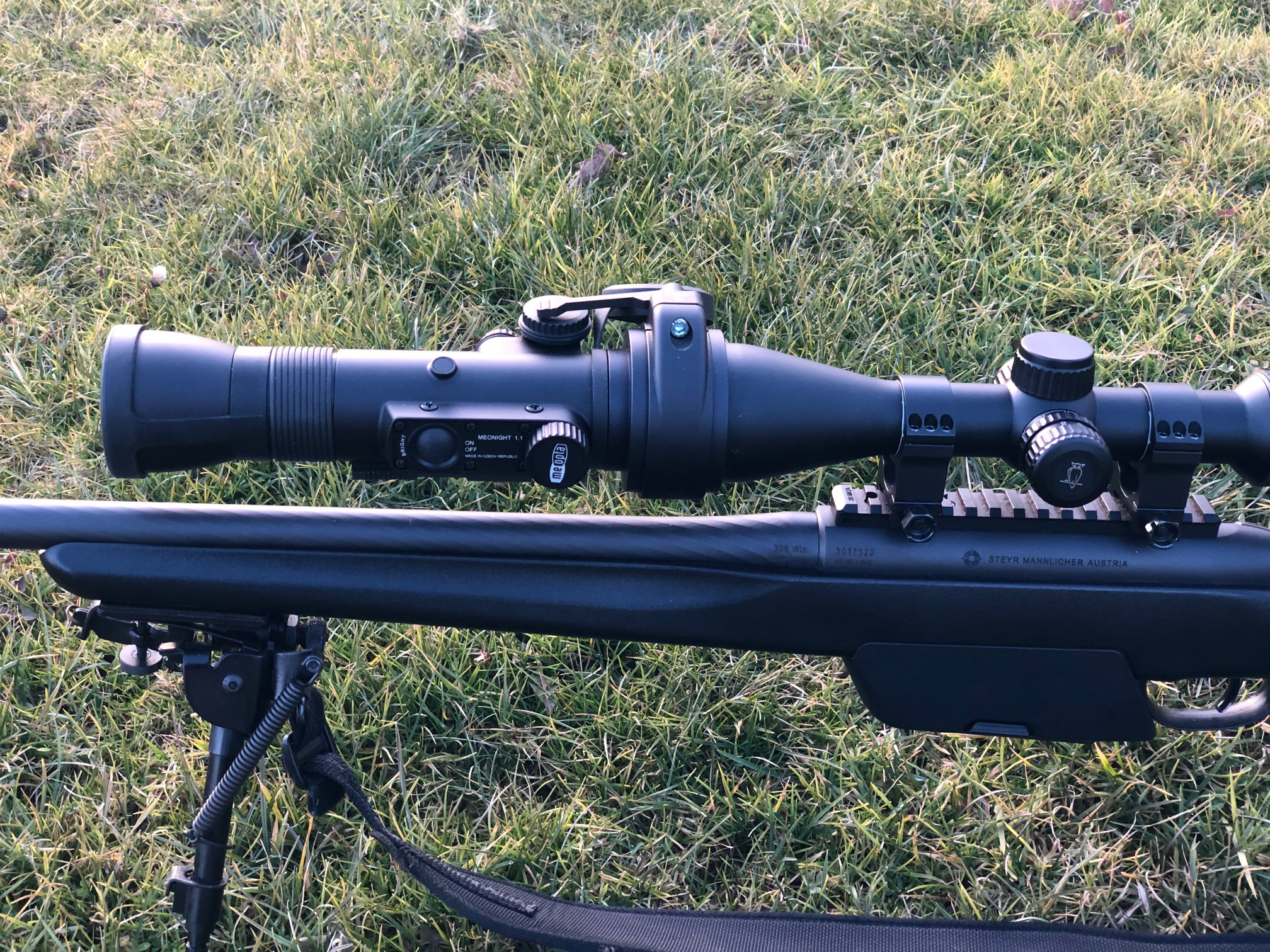
To do so, the ocular has to be designed differently – so that you get the best possible image when it is mounted on a daytime optic. This doesn´t mean that you can´t observe without a daytime optic, but the image is small and when looking into a clip-on, it looks like the image is in a tunnel (away from the eye). Many night vision clip-on devices do also not feature a diopter adjustment for focusing, but only the parallax adjustment.
Clip-on devices are also designed to withstand the recoil of a rifle. Before buying, you always have to be careful that the device can withstand the recoil of your caliber. Many of them are designed for calibers up to .308 Winchester and similar, so if you have a stronger recoiling caliber, it can damage the internals of the device.
Many users try to attach their 1x magnification monoculars to their rifle scopes with special adapters. These are mostly available for attaching the device on the ocular of a rifle scope. This is very common among airsoft players, but we would strongly NOT recommend attaching these on a centerfire caliber – it can be very dangerous! Doing that can damage the internals of the night vision monocular, but it can get even worse – to look through an NV monocular, you have to be very near (almost touching the ocular of the NV device). So when the shot is fired, because of the recoil, it can hit you in the eye.
A short presentation of NV Scopes is available here.
Video presentation of Digital NV Monoculars
Filters
Sort
Filters
Sort
